
Issue Contents

Click on any photograph to open a bigger version in a new tab. Ctrl+w will close the new tab and return you to your Carfree Times tab.
Bhaktapur in Photos: Small Shops
The backbone of commerce in Bhaktapur is still small shops owned and operated by a family. Larger shops are starting to creep in, and the first big-box stores have already made their appearance in Kathmandu, where small shopkeepers are already under threat from larger operations. This is a worrisome trend, given the importance of small, locally-owned shops to the neighborhood social fabric. Bhaktapur is not yet greatly affected by this change, but already larger shops are appearing down on the highway.
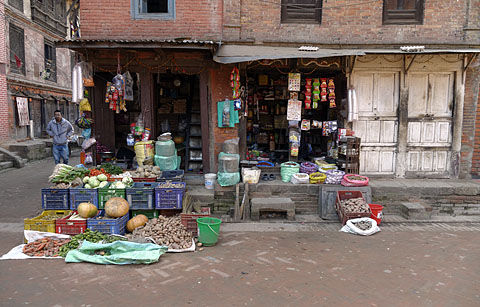
2014 Bansidhar Sainju

2014 Bansidhar Sainju

2014 Bansidhar Sainju
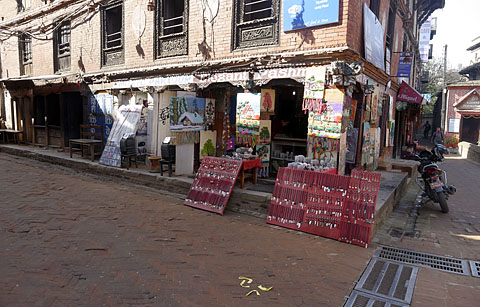
2014 Bansidhar Sainju
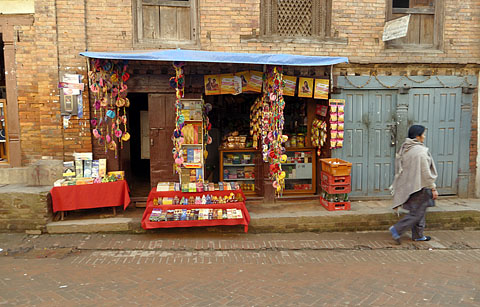
2014 Bansidhar Sainju

2014 Bansidhar Sainju
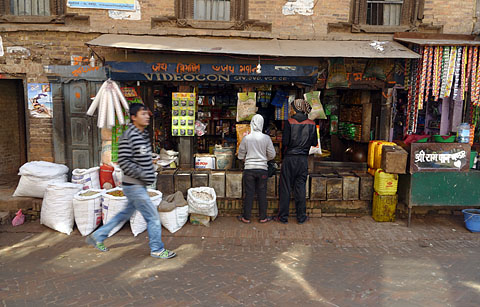
2014 Bansidhar Sainju
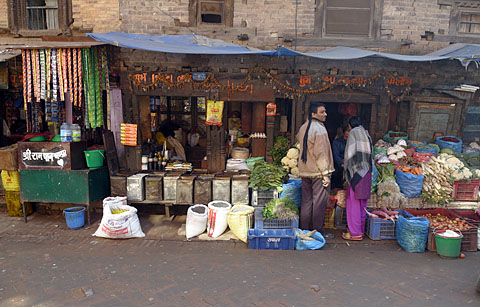
2014 Bansidhar Sainju
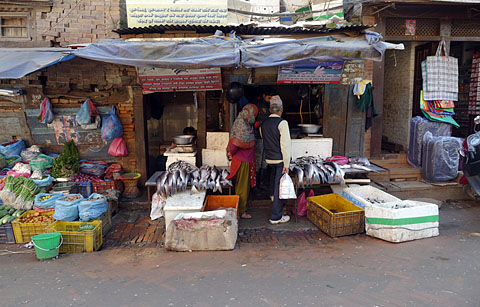
2014 Bansidhar Sainju

2014 Bansidhar Sainju

2014 Bansidhar Sainju

2014 Bansidhar Sainju
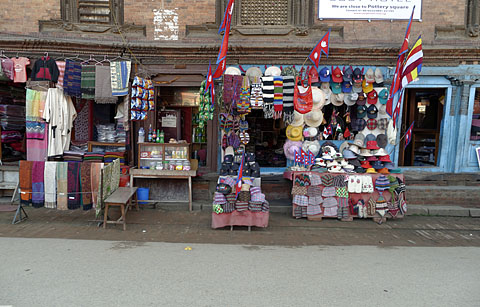
2014 Bansidhar Sainju

2014 Bansidhar Sainju

2014 Bansidhar Sainju
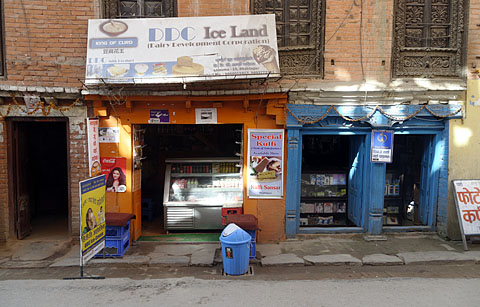
2014 Bansidhar Sainju

2014 Bansidhar Sainju
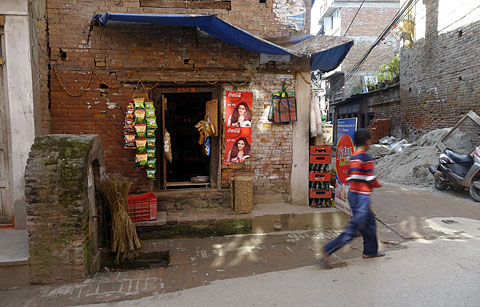
2014 Bansidhar Sainju
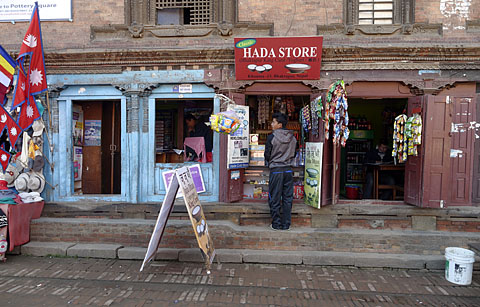
2014 Bansidhar Sainju

2014 Bansidhar Sainju
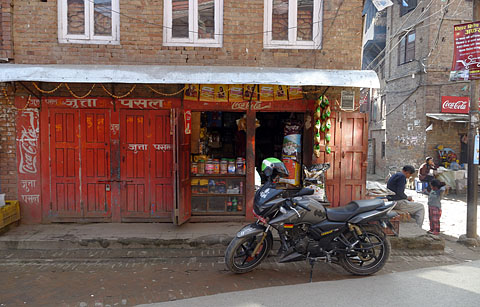
2014 Bansidhar Sainju
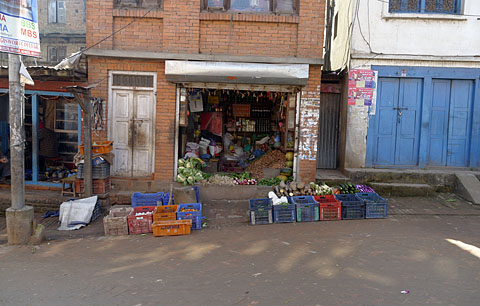
2014 Bansidhar Sainju
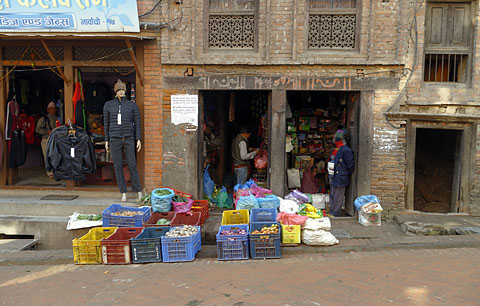
2014 Bansidhar Sainju
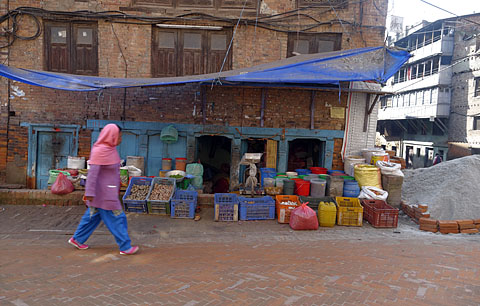
2014 Bansidhar Sainju
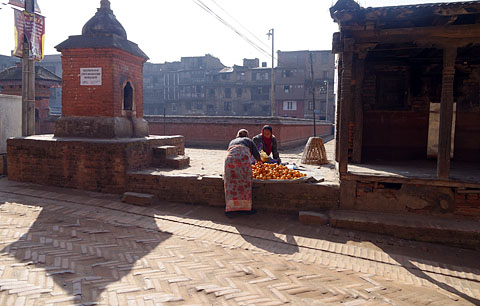
2014 Bansidhar Sainju
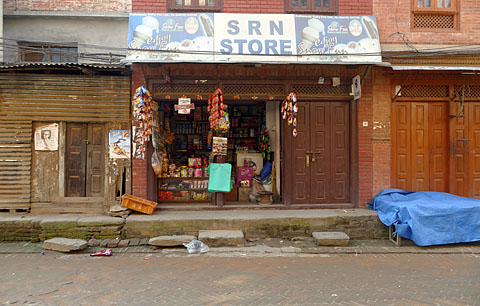
2014 Bansidhar Sainju
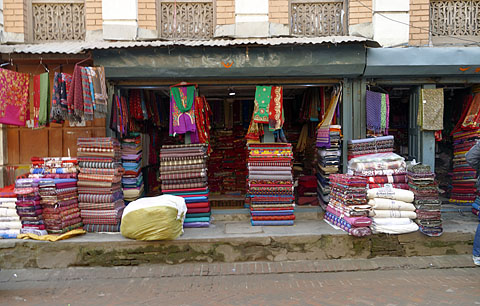
2014 Bansidhar Sainju
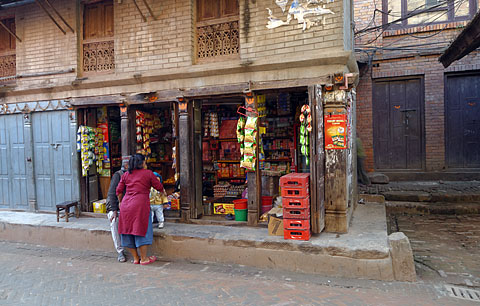
2014 Bansidhar Sainju

2014 Bansidhar Sainju
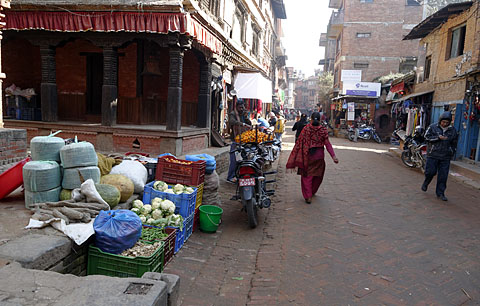
2014 Bansidhar Sainju
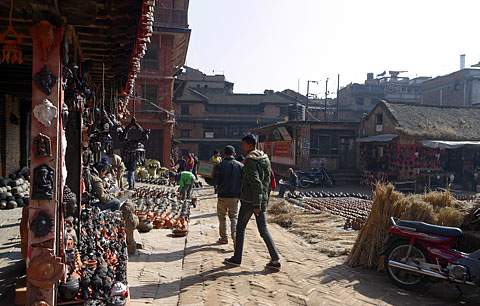
2014 Bansidhar Sainju

2014 Bansidhar Sainju
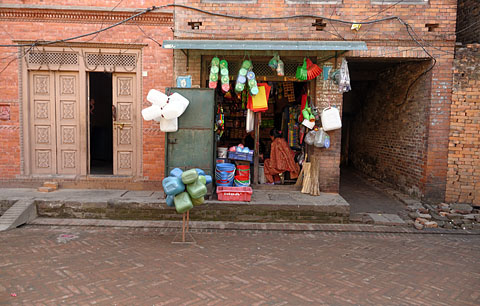
2014 Bansidhar Sainju

2014 Bansidhar Sainju

2014 Bansidhar Sainju
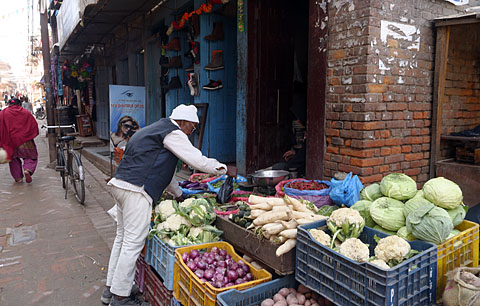
2014 Bansidhar Sainju

2014 Bansidhar Sainju

2014 Bansidhar Sainju
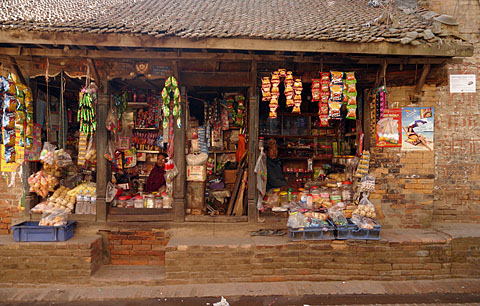
2014 Bansidhar Sainju
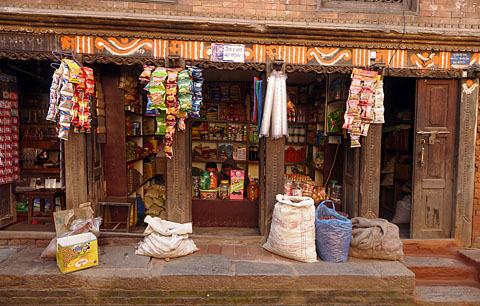
2014 Bansidhar Sainju
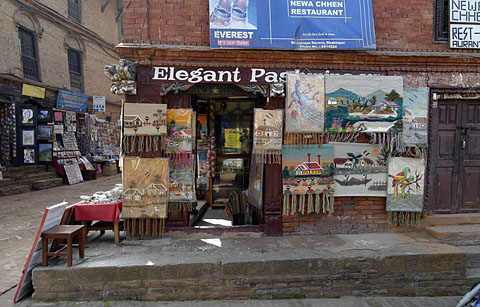
2015 Bansidhar Sainju
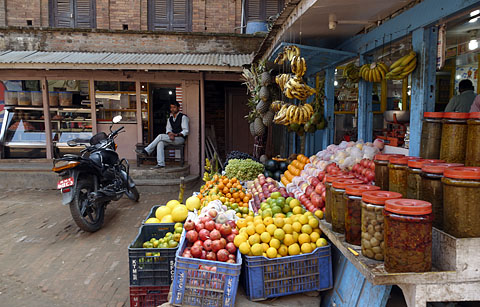
2015 Bansidhar Sainju
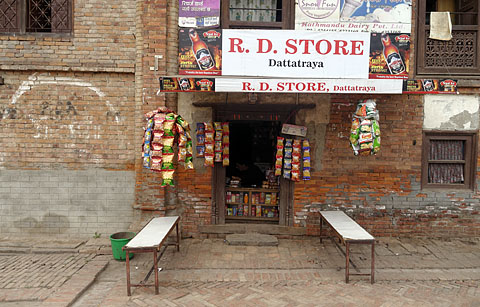
2015 Ram Kumar KC

Bhaktapur in the Rain
The midlands of Nepal have highly seasonal rainfall, with very little occurring between October and February. This was one of the first rains of the new season. Heavy rain falls during the monsoon, roughly June through September.
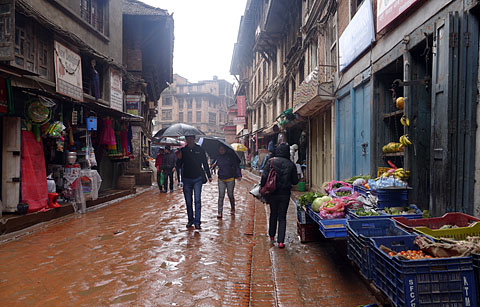
2015 Bansidhar Sainju
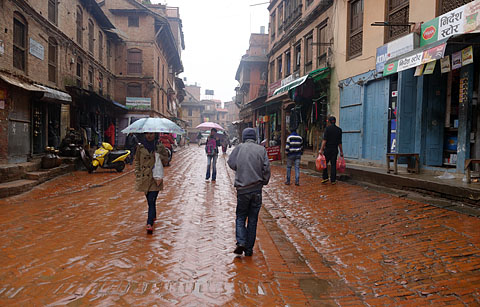
2015 Bansidhar Sainju

2015 Bansidhar Sainju
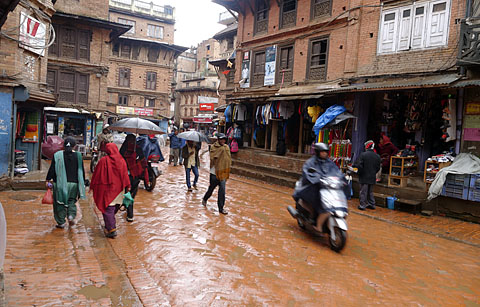
2015 Ram Kumar KC
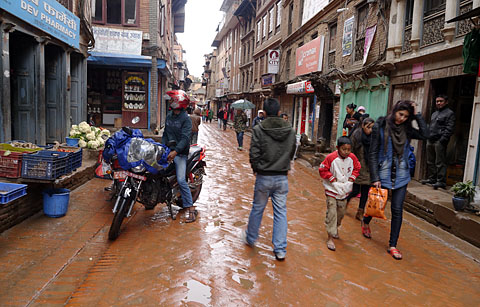
2015 Ram Kumar KC
|

|

Announcements
Major Film: Recovering from Disruption: A Comprehensive Approach to Building a Better, More Sustainable World
Carfree.com, in cooperation with Work for a Better Bangladesh, is hard at work on a one-hour video that considers the many challenges to sustainability that we face and offers a full set of solutions. We aim to have the film released in plenty of time to influence the Paris climate talks in December.
The film will be released under a Creative Commons attribution-only license, and groups around the world are invited to make a localized version in their own language. We will be able to furnish all the materials that went into making the initial version, which will be released first in English, followed quickly by Nepali and Bengali. We are excited about project, by far the most ambitions film we have undertaken.
In the mean time, the existing 30 videos continue to draw views. You can find them all here:
You can also use the new Carfree channel at Vimeo.
If you watch a video, please Like it by clicking the Heart icon in the top-right of the video frame (Vimeo) or clicking the Thumbs Up icon below the video (YouTube). Posting to Twitter and Facebook will also help. We need to get the message out to a broader audience and develop our audience for the coming film.
Open-Source Photographs
Carfree.com maintains a large library of images related to carfree cities. For contemporary photos, see Film and Digital. The Postcards section is a valuable source of images about a century old. Subject to the newly-relaxed Terms of Use, most NGOs can make free use of these images, which are sorted by both place and category for your convenience in locating the image you need among the roughly 10,000 that area available. In some cases, we can provide high-resolution versions.
Carfree on Social Media
The Carfree page on Facebook has been online for about two years. We post two or three times on a typical day. The CarfreeCities feed at Twitter has similar content to the Facebook page, but some of you may prefer the Twitter format. We have also pinned some nice images on the Carfree feed at Pinterest. Don't forget to Like us!
The Books
Carfree Cities and Carfree Design Manual are widely available from booksellers in Europe and North America.

Feature Article
The Relevance of Ancient Newari Urban Settlement Patterns to the Global Sustainability Crisis:
The Sociocultural Aspects and Urban Form of Newar Towns
By Dristy Shrestha with Shail Shrestha
Introduction
With the rapid growth of urbanization and industrialization worldwide, the issue of sustainability has come to the forefront of global concerns. As people come to understand the catastrophe that global climate change presents as well as the consequences to local environments and health, they are demanding a reduction in carbon emission and a change to sustainable cities and nations.
In 1990, there were 10 megacities with populations above ten million. Today there are 28, and by 2030, there will probably be 41. Half the world population now lives in urban areas. Sustainable urbanization has thus become the key to successful long-term development. [UN report]
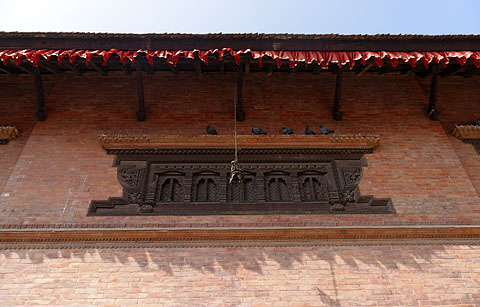
Traditional carved windows, Bhaktapur

2015 Bansidhar Sainju

Elaborately carved doors, Bhaktapur

2015 Bansidhar Sainju
The quality of life in a city is largely determined by the existence of strong communities and high-quality public spaces. In most new-built urban places, a sense of community value and public presence is lacking. In fact, for Nepal, city life is characterized by individualistic lives and a lack of community when compared to village and rural life. By this measure, the historic Newari settlements of Nepal are characterized by excellent urban design. The Newars placed great value on public spaces and the exterior appearance of the buildings, particularly the elaborately carved windows and doors. Most Newar cities and towns enjoy a high standard of art, sculpture, architecture, and town planning and design.
In this article, we will discuss the distinctive urbanism of the Newari people and their settlements and then compare it with global urban trends. In particular, the increasing sustainability issues with cities in the developing world need solutions, and we will consider the advantages of traditional Newari urbanism with respect to strong societies and long-term sustainability. We will also consider the need for solutions that meet local needs.
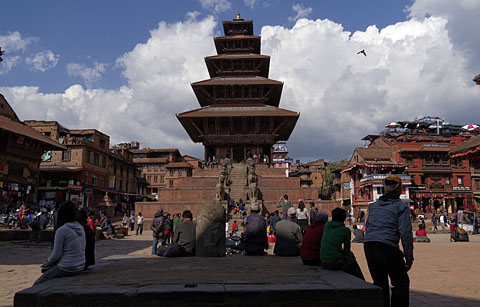
People relaxing in front of Nyatapola at Taumadhi Square, Bhaktapur

2015 Dristy Shrestha
Urban Characteristics of Newari Settlements
In Building Today in Historical Context: Bhaktapur, Giovani Scheilber states that "Newari town planning with all its many typical features, must be described as the single, great, cultural achievement of the Newari people." He further states that the careful design of furnishings in public spaces shows the importance laid by the planners on public life. He notes that settlements of other ethnic groups in Nepal exhibit a dispersed pattern of agglomerations or main-street villages, while Newari settlements are all compact and dense. Another aspect of the Malla period (12-19th century CE) was the emergence of a society principally organized by occupation, in which families that are engaged in the same occupation lived in small sub-communities. This became a strong social force that influenced the overall planning of the city and helped to minimize the distances people travelled every day.
Newari town settlements show highly sophisticated town planning. Even the smallest Newari settlements exhibit the same basic urban characteristics: compact settlement, high building density, a wide variety of occupations, and high quality of life.
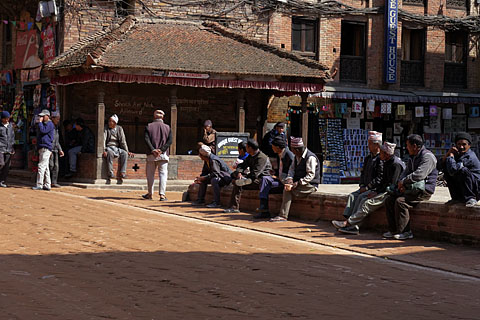
People taking the sun in Dattatraya Square at the winter's end

2015 Dristy Shrestha
The urban characteristics included high population density and small land area occupancy, so it becomes apparent that the Newari people long ago understood the value of land and the need to conserve it. The compact pattern of housing freed up some land for public space in every neighborhood. Instead of building large houses, they saved land to establish courtyards for each neighborhood group of houses. Public space arrangement was given high priority, and street-facing building façades featured wood carvings and elaborately cast bricks. The public spaces included market squares, neighborhood squares, residential squares, and a Durbar (royal) square in each section of town. They also constructed water reservoirs (pokhari) and conduits in each neighborhood in order to supply water for agriculture and household use. Drainage systems were also constructed.
Reasons for the Rise of Urban Development
The urban society of Kathmandu Valley emerged over the course of many centuries, and no one historical figure had more than a small influence on the result we see today. The Newar urban form began to emerge during the Kirata epoch (800-300 BCE) and continued through the Lichchhavi period (approximately 400 to 750 CE) right to the end of the Malla period.
The most notable planning idea applied in traditional Newar towns might best be termed "zoning by jaat," (a caste that was based on a profession), which at once ensured survival of the profession, reduced intratown movement (because of home-based work places), and allowed the growth of localized, homogeneous communities. According to Sudarshan Raj Tiwari, the dispersal of "jaats" in the town was based on "proximity priority related to the frequency of consultation" with the palace or the state.

Elderly resting at the rest houses (patis) which they might have seen being built when they were children

2015 Bansidhar Sainju
The neighborhoods established by professional division also embraced the work-at-home principle. Physical boundaries between the jaats were not necessary as relations between castes were normally harmonious. Each sociocultural group had its own "guthi," a community organization that placed various responsibilities and duties on each caste group for arranging rituals and festivals, a time when caste divisions were dissolved, thus ensuring that heterogeneity prevailed in the larger society. The Guthi appears to have a strong role and may have been one of the reasons underlying the form and function of public open spaces. The "Guthi system" was a trust, in which land was donated to the trust and any revenue generated helped the community at large and was utilized for various community works such as restoration of temples, patis (rest houses), maths (priest houses), dhunge dharas (stone water spouts), and to carry out various festivals, customs, rites, and rituals. Strong socio-religious imperatives helped to protect the donated lands from misuse.
According to Mangala Devi Singh in her book Nepali Sanskriti ka chhata haru, most of the Guthi system is slowly being lost due to changes in the social structure of communities and even more so as a result of changes in the past 50 years, including the nationalization and institutionalization of the Guthi system and land reform campaigns. Most Guthis do still exist although the activities that they conduct have in many cases diminished considerably.
Newars developed sophisticated irrigation techniques for the highly fertile land they occupied. Their agriculture was so productive that they harvested two or three times a year. The resultant food surplus enabled them to begin trading with neighboring settlements for goods. They had plenty of time for their other occupations, such as art, stone sculpture, and wood carving, which later became the basis for dividing the society by occupation. Financed by the Guthi system, the surplus time was also invested in a group of people such as masons, shilpakars (the group of people who work with wood) and helping them to develop their skill.
They spent most of their leisure time making their town more beautiful, and this led to the creation of vibrant societies. The many festivals and rituals scatted throughout the year made their towns lively all year long. Through the course of centuries, a rich tradition emerged that underlay their art and culture.
Settlement Typology
Sudarshan Raj Tiwari, in "City Space and Life then, 150 years ago - A presentation of concept and realities" (PDF), explained the design of Newari settlements and their characteristics as being based on pedestrian scale. He further explained that streets were built as activity spaces and that different forms of community spaces were distributed throughout the town. These arrangements tended to make the town more responsive to the needs of communities than of individuals.
Pedestrian Scale
Tiwari further explained that Newari towns were not only built to human scale but were also designed for pedestrians. The buildings and their ornamentation were designed with the pace of pedestrian movement in mind. The plain-surfaced buildings, embellished with minutely detailed windows, were a response to the human ability to savor details when moving slowly. Unlike today's monotonous grid-based cities, the width of the streets varied in response to the design features of buildings, which resulted in much variation. Thus, streets became more than just streets, and a hand-carved window became much more than simply artistic self-expression.
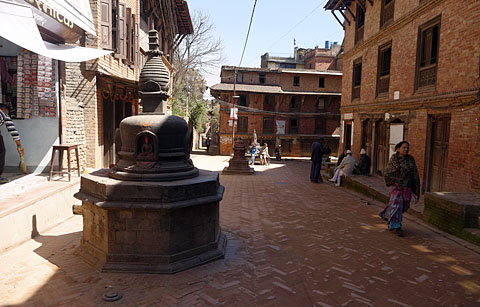
A small square that serves as a social node, Bhaktapur

2015 Dristy Shrestha
Community Space
Tiwari also mentions that spaces were traditionally divided into three types: nodal spaces, street spaces created by varying widths, and Bahal spaces. The Bahals were the religious spaces but gradually transitioned to workshops. Durbar Squares were specifically for kings, and had cosmic images in them, but gradually transformed into space for ordinary people. In recent centuries, the Durbar Squares have become market squares, which would once have been unthinkable.
Nodal spaces were characterized by informality and an element of surprise. Unexpectedly large or small temples would spring up from behind to make one look up the sky or down at a deep stone water conduit. The central royal squares became the seat of power and the place where royals and nobles mixed.
The medium-sized squares are used as markets and social centers. The street network is hierarchical. Besides the main streets, narrower side-streets ("gallis") led to the market or social squares belonging to different jaats. These social squares were semi-private spaces used mainly by extended family groups.

A characteristic Dalan

2015 Dristy Shrestha
Streets
Streets were more than just movement spaces for pedestrians. Their irregularity was deliberate and intended to enhance their use as activity spaces. The streets were linked to the interior of houses not only by the building design elements of the "Dalan." A Dalan is the covered open space behind twin rows of carved and ornate wooden columns. Enclosed space around the Dalan is used as entrance with staircase and storage space or shop front; a private residence is located above. The Dalan is internationally recognized by architects as a distinctive element of Newari architecture and one that gives priority to public spaces over private space. Sometimes the entrance leads to the Chowk (courtyard) that is surrounded by a Dalan which provides access to several different houses. House and street were clearly intended to interact visually as well as physically. The streets were used for open shops, gossip places, meeting locations, places for household work, and locations for rituals. Often, the streets were used for several functions at once, as in the case of gossiping while knitting. The streets were also used for daily movement to the farms. Commercial function tended to be concentrated on the main streets and at intersections.

Residential courtyard with temple ("Bahal"), Bhaktapur

2015 Dristy Shrestha
Squares
Squares were formed where a number of streets intersected to create a single node with a specific function. Their spatial configuration differed depending on the social and economic aspects of their use. The principal types of squares were: markets squares, religious squares, Durbar (palace) squares, and residential squares. The major squares were located near the center of the town and acted as civic centers because many activities occurred there that were of interest to a large portion of the town's population. Historically, these squares were known as the centers of specific communities. Today they help to shape the identity of the whole city. Every square had religious shrines, community buildings, and rest houses.
Newar town planning concepts were based largely on preservation of nature and resource conservation. That is why, with the few exceptions, the settlements were established on the highest ground, with arable land at lower elevations. They were generally situated well above the river thus safe from flooding. They had traditional methods of waste management, with each community having its own organic waste bins, which eventually produced compost that was spread on the fields.
Only after the 1482 Malla kingdom's division into the three roughly equal-sized kingdoms of Kathmandu, Patan, and Bhadgaon, did the towns have to be surrounded by walls or moats. The boundaries were defined by boundary gods, such as Matrikas. The establishment of occupation-based jaats soon became a strong social factor in affecting the overall planning of the city.
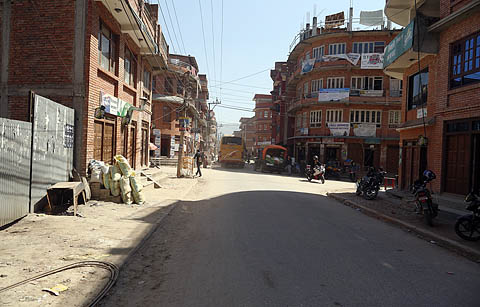
Wide streets in Libali, a partially-completed new urban area, Bhaktapur

2015 Bansidhar Sainju
Recent Deviations from the Historical Patterns
Over the last few decades, changes have been so extensive that in many places it has become difficult to visualize what the past would have looked like. Roads have been widened and extended, and motor vehicles have always been given precedence. Pedestrians have been relegated to whatever small space may be left over.
The concept of the city-state that developed in the late Malla period (around 1480) has come and gone. In its place is a centralized government. However, for many years the air was still clean, and the presence of nature formed a beautiful backdrop to the urban scene. Life was leisurely, and the town was well adapted to this slow-paced life. Until recently, people could go for a family outing in a nearby peaceful square and feel quite at ease.
Scheilber states that after the Malla rule was brought to an end by the Gorkha invasion of the Kathmandu Valley, some years of political and economic inactivity began for the Newari people. This occurred because crucial parts of the urban structure were neglected. Newaris lost a substantial part of their arable land when land ownership was reorganized. A tax system was introduced from the profits to invest in the imports of goods by the Royals and the noble class. As a result, the per-capita income of the people suffered a large and permanent reduction. During the worst part of this period, the extravagant household budgets of the Rana families impovrished the region.
With the ending of Rana rule came a huge change in events affecting the Newar cities and towns in the Kathmandu Valley. The Ranas had been influenced by Western ideas of development. Those with money built large villas in the European manner to show their difference from other people and to demonstrate their refusal to integrate with the Newaris. The re-opening of the trade route from India over Sikkim to Tibet resulted in a large reduction in the per capita income of the Valley's population. It is uncertain, but it may have been that trade routes from India to Tibet via Sikkim undermined what had once been a monopoly trade route through Nepal. After the Chinese conquest of Tibet in 1950, the borders between Nepal and China were completely closed for decades, which ended the centuries-old trade that had maintained elements of Nepali society. In many places, small holdings were impoverished and the urban character degraded.
Following the end of Rana rule, there was a mass migration out of over-populated old city centers and immigration from all over Nepal into the Kathmandu Valley. Kathmandu, Nepal's capital and principal city, was seen as the place that offered the greater opportunity and also enjoyed the most highly developed infrastructure. The migrations of the last 40 years led to the break up of the extended-family structure of Newari towns. Agricultural land was lost to buildings which made inefficient use of the land. These changes caused a massive shift in the political landscape of Kathmandu.
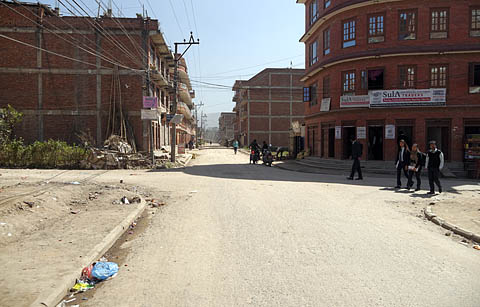
Weak social spaces in Libali, Bhaktapur

2015 Bansidhar Sainju
The disintegration of cities and towns has led to the adoption of the Western philosophy of development, with modern concrete skyscrapers and wide roads. This has been accompanied by a neglect of urban social spaces and the dedication of public land to private transport. With the rise of globalization came a rapid increase in mass production and consumption along with a massive migration of people from other regions of Nepal to the Kathmandu Valley. This in turn led to the rise of unemployment and slum districts near the river valleys. The rapidly-emerging cities are becoming unmanageable in the matters of traffic management, waste management, and sewage disposal. Without the careful planning that once characterized the Newari cities, urban Kathmandu is destroying land and natural resources. This has already led to an environmental crisis and may lead to a severe scarcity of essentials in the future.
In his graduate thesis "Integration of Urban Edge and Cultural Heritage Zone," Shyam Sundar Kawan mentions that modern societies now limit the opportunities for sociocultural ambiance, ecological society, and communal activities that once prevailed in urban spaces. In the present context of development, cities are better known for their explosive growth than for their culture. Developing countries as a group tend to put greater priority on their economic development than on the preservation of their heritage.
The commercial and business city is so dominated by economic considerations that the town has become a conglomeration of enterprises. Today we tend to forget that the original reason for networking was to create a forum for living. This has now deteriorate into sociocultural inter-dependencies that exist in a heterogeneous environment with diminished cultural expression. As foreign tourism has increased, cultural, social, and symbolic resources are expended in the name of economic benefit which comes at a cost to traditional culture. Modern development has created boundaries in the form of fast roads that have restricted the growth of the old historic cities and is replacing traditional urban cores with ill-defined urban spaces with little public open space but much space for vehicular movement.
Kawan mentions that the Bhaktapur reconstruction program, aimed primarily at tourism development and improved economic opportunities, led to the adoption of the ring-road concept, which choked off further expansion of Bhaktapur (and other cities) and led to vehicle-dependent neighborhoods overshadowing the former pedestrian cities.
According to Kawan, it can be expected that, in an economics-dominated approach to contemporary town development, sociocultural functions tend to become a peripheral concern. It is likely that urban society will become fragmented and contentious. The urban poor will live in degraded social environments and most likely fail to achieve the prosperity that many other groups will enjoy.
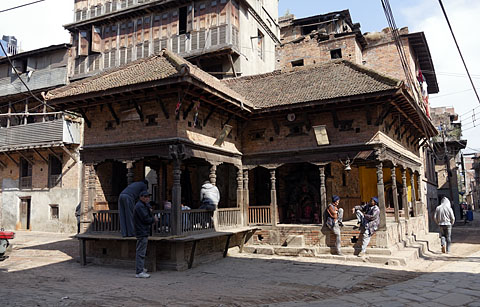
Local residents relaxing and playing cards at a rest house, Bhaktapur

2015 Dristy Shrestha
Learning from Tradition
In the midst of the urge to catch up with the developing world, holding on to the standard notion of "development" and its strong focus on economic growth, Nepal may lose sight of its thousands of years of culture and heritage in the scramble for economic growth. Nepal needs to assess as a nation the value of its cultural heritage as a model for genuine societal progress, and this may come into conflict with Western values of "development."
A city is represented not only by its infrastructure but also by how people react in the space and what the quality of life is. As in the modern Western world, Nepal is influenced by development trends. According to UN-Habitat, Nepal is the fastest urbanizing country in South Asia. The major cities are adopting vehicle-centric design, creating an unhealthy environment for the citizens. A human-centric design is concerned not only for the rights of the pedestrian but also for the people to socialize and mobilize.
By contrast, in traditional Newari settlements the streets were always human-scaled. Narrow streets were paved with bricks and stones. The presence of public spaces shows that the towns and their inhabitants valued community and social activities. They enjoyed a healthy and probably happy way of life.
Newaris thought about community-level prosperity and sharing rather than about individual prosperity. Today, as modern amenities arrive, people are losing their bond with nature and the community in which they live in.
Moving Ahead
Bhaktapur Municipality has restricted vehicles in its historical core, but due to lack of support from the locals and weak enforcement, this provision is scarcely observed. A huge gap has arisen between the local residents and government regarding conservation and development policies. Residents were once highly involved in organizing the city structure, and development was mostly slow and organic, which provided time to reflect on the changes and development patterns. However, today's aggressive development does not provide time for reflection on what is wanted or how proposed changes would affect life. Once, people adapted spaces to fit their social and cultural needs. Today, city planning is centralized, and the role of the local residents in the process has declined, thereby forcing the people to adapt their way of life to centrally-planned spaces.
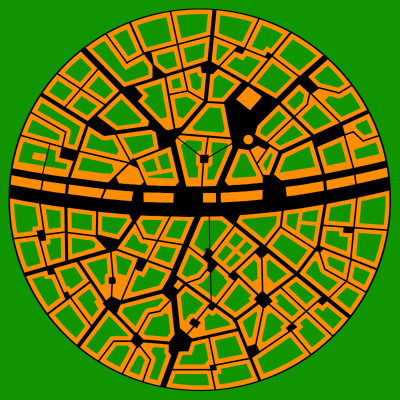
The ancient Newari cities are remarkably similar to the
Reference District proposed in Carfree Cities
The ancient Newari cities can serve as a template for sustainable cities and towns of the future, both in Nepal and throughout the world. They are among the most sustainable existing cities because they consume a minimum of land and resources. Many new city plans have proposed and some even implemented, such as Masdar City, which might be sustainable once constructed but which consume such extreme amounts of steel and concrete in their construction that they can never be replicated on a global scale. However, with comparatively minor adjustments, the Newari city model can be extended to practically any urban region in the world. The biggest change needed is the addition of public transport systems in settlements that are too large to walk across. Traditional Newari cities are entirely compatible with the Design for Carfree Cities, as shown above.
When planning any new city, we must study the way in which the neighborhoods of Bhaktapur were based on the role of individuals in relation to the whole community. Even today, the Newar social institutions are the binding force that maintain social harmony. Today, life in the Newari cities differs from traditional life, with individual desires taking higher priority over the needs of the community. At a time when individualism holds sway, it would be a challenge to convince people to build a city that is based more on community than on individualism. Yet it is becoming apparent in the West that people are unfulfilled by the extreme individualism of their societies. They are beginning to view the suburban way of life, with its exquisite isolation, less favorably than community life in cities. This may signal an important change of attitudes in the West, which might slow the headlong rush of the rest of the world towards the Western model. It would help to preserve traditional cultures and values.
The conservation of the tangible and intangible heritage of historical cities, such as those of the Newars, should be led by local families or communities rather than donor-based organizations. Indeed, such a shift was seen during the 40-year redevelopment process in Bhaktapur, much of it financed by generous foreign donors. As this evolved, local people demanded, and got, more say in the nature of the process, its objectives, and the final result.
The younger generation in developing countries like Nepal is greatly influenced by Western trends, and if we are to preserve culture and tradition a significant effort must be made not to prevent them from falling beneath the wheel of Western "progress." Programs and workshops should be held to foster deep understanding of the culture as it has been received and to preserve cultural practices, traditions, and skills.
As the demand for private vehicles in historic cities increases, the issue can be managed by establishing parking lots along the edge of the town so that the greatest walking distance from the parking lots into town does not exceed 10-15 minutes. Internally, these towns have always been walkable, and if that advantage is to be preserved, the onslaught of cars and especially motorcycles must be curtailed. Public transport will serve the edge of the town, making the whole of the district readily accessible without the use of private vehicles.
A close analysis of Newari urban settlements and a comparison to automobile-based town planning practices leads to following recommendations for the development of new urban areas in Nepal and other parts of the world that are still urbanizing:
- Predetermine the density of each settlement area in accordance with land use plans, and require their development at human scale.
- Give priority to the need for effective public spaces and the various uses to which they may be put.
- Give precedence to sociocultural issues over economic growth.
- Give the highest consideration to the establishment of a locally-based economy and of open markets on streets and squares that are arranged for the convenience of people, not machines.
- Abandon simplistic, grid-based town plans and establish in their place streets that are unique in their characteristics and well adapted to the opportunities and challenges of the site.
- Preserve existing traditional social spaces.
If applied in Nepal, these guidelines would help to preserve the inherently sustainable qualities of Newar settlements as well as to protect the Newari culture. As with traditional city forms generally, this should serve to create new urban areas that are highly functional and attractive for both their residents and for those visiting from elsewhere.
Dristy Shrestha lives in Kathmandu and is active in the carfree and bicycling movements. She is in charge of developing the theory and practice of carfree villages here at Carfree.com.
Shail Shrestha also lives in Kathmandu and is a bicycle campaigner, videographer, and activist. He makes films on social and
development issues
We would like to acknowledge the assistance of Shyam Sunder Kawan for his assistance in preparing this article.
Sources consulted in the preparation of this article are given in links within the article text.

News Bits
The links below will open in a new browser window or tab, depending on your browser; (Ctrl+click may behave differently):
Thanks to Debra Efroymson, Piper Hollier, Richard Risemberg, and Doug Salzmann for suggesting articles. Thanks to Bansidhar Sainju for production assistance.
Top Stories
"Prince Charles reveals 10 principles for 'more mature view' of urban design"
Prince Charles is despised by the architectural establishment. That alone is reason to think he may be on to something. Here are his 10 principles for masterplanning:
- Developments must respect the land. They should not be intrusive; they should be designed to fit within the landscape they occupy.
- Architecture is a language. We have to abide by the grammatical ground rules, otherwise dissonance and confusion abound. This is why a building code can be so valuable.
- Scale is also key. Not only should buildings relate to human proportions, they should correspond to the scale of the other buildings and elements around them. Too many of our towns have been spoiled by casually placed, oversized buildings of little distinction that carry no civic meaning.
- Harmony - the playing together of all parts. The look of each building should be in tune with its neighbours, which does not mean creating uniformity. Richness comes from diversity, as Nature demonstrates, but there must be coherence, which is often achieved by attention to details like the style of door cases, balconies, cornices, and railings.
- The creation of well-designed enclosures. Rather than clusters of separate houses set at jagged angles, spaces that are bounded and enclosed by buildings are not only more visually satisfying, they encourage walking and feel safer.
- Materials also matter. In the UK, as elsewhere, we have become dependent upon bland, standardised building materials. There is much too much concrete, plastic cladding, aluminium, glass and steel employed, which lends a place no distinctive character. For buildings to look as if they belong, we need to draw on local building materials and regional traditional styles.
- Signs, lights, and utilities. They can be easily overused. We should also bury as many wires as possible and limit signage. A lesson learned from Poundbury is that it is possible to rid the street of nearly all road signs by using ‘events’ like a bend, square or tree every 60-80 metres, which cause drivers to slow down naturally.
- The pedestrian must be at the centre of the design process. Streets must be reclaimed from the car.
- Density. Space is at a premium, but we do not have to resort to high-rise tower blocks which alienate and isolate. I believe there are far more communal benefits from terraces and the mansion block. You only have to consider the charm and beauty of a place like Kensington and Chelsea in London to see what I mean. It is often forgotten that this borough is the most densely populated one in London. [emphasis added]
- Flexibility. Rigid, conventional planning and rules of road engineering render all the above instantly null and void, but I have found it is possible to build flexibility into schemes and I am pleased to say that many of the innovations we have tried out in the past 20 years are now reflected in national engineering guidance, such as The Manual For Streets.
"All I am suggesting is that the new alone is not enough. We have to be mindful of the long-term consequences of what we construct in the public realm and, in its design, reclaim our humanity and our connection with nature, both of which, because of the corporate rather than human way in which our urban spaces have been designed, have come under increasing threat." I couldn't have said it better myself. (Dezeen.com)
"Survivable IPCC projections are based on science fiction - the reality is much worse"
"The IPCC's 'Representative Concentration Pathways' are based on fantasy technology that must draw massive volumes of CO2 out of the atmosphere late this century, writes Nick Breeze - an unjustified hope that conceals a very bleak future for Earth, and humanity." At a warming of 2.5°C, trees are lost as a carbon sink. (TheEcologist.org)
"Fusion reactor concept could be cheaper than coal"
"Expert: U.S. Has Leveraged Economy On Shale Oil, Which Saudis May Be About To Crash"
The Saudis are flooding the international market with cheap oil. Why are they doing this? One expert says that
"the big untold story here, the US financial markets, mutual funds, Wall Street, and 40% of the entire US economy has been leveraged on shale oil. If the Saudis actually stop the shale industry, a financial collapse larger than the one in 2008 would take place." That would certainly be a mess. (Benswann.com)
"Is the US Overplaying Its Energy Hand?"
Richard Heinberg is one of the most thoughtful writers on energy policy. American brinkmanship in the world's oil patches is a dangerous game that is apparently propped up by the mirage of sudden American natural gas surpluses. You really ought to read this one. (PostCarbon.org)
"Anti-'Geoengineering' National Academy Report Opposes 'Climate-Altering Deployment'"
The National Academy of Sciences has released two reports on "climate intervention," their new name for geo-engineering. (They don't like the latter term because it "implied a level of control that is illusory." The actual consequences of climate interventions are unknown and also fail to address some very serious issues, such as ocean acidification. Best we don't go there, so sayeth the Academy. (ThinkProgress.org)
Urban Planning and Design
"Density is Great, But Walkability Needs More"
A study of Manhattan Beach (paradoxically a part of Los Angeles), reveals that good walking and cycling are not enough to ensure good walkability. Mixed uses are also essential, to bring most daily destinations within range. (SustainableCitiesCollective.com)
"An Example of Low-Rise Intensification: Union Street EcoHeritage"
For years I have said that the American suburbs can only be saved by increasing their density rather considerably. Now someone is doing something about it. In this example, a site that once had just two dwelling units now has seven. (SustainableCitiesCollective.com)
"Fine Grained - Strong Towns"
"Cities are the physical manifestation of the economy. A fine-grained city represents a fine-grained economy. Early American towns and cities have a lot of buildings and streets that are very fine grained - in that each building itself is narrow and small - and I can imagine that a century ago the average person within their lifetime could afford to buy a plot of land about 20 feet wide and open a shop or lease out the bottom while they lived upstairs." (StrongTowns.org)
"Bike racks in car bays lift shop trade"
"Converting on-street car parking into bike racks could be a gold mine for inner suburban businesses" according to an analysis by Australia's top transport research authority. (Au.News.Yahoo.com)
"Paris mayor announces plans for a car-free city centre, plus €100 million for bike lanes"
The mayor of Paris has announced a plan reduce traffic and air pollution by transforming the city's historic center into a "semi-pedestrianized" zone. Precisely what that involves is unclear, but the number of bike lanes will be doubled by 2020. This is funded by a €100 million bike development plan. The city today suffers from episodic severe air pollution that requires limits on car use. (Smh.com)
"Geef de fiets de ruimte waar hij recht op heeft"
The inner city of Amsterdam occupies a bit more than 800 hectares. After deducting from that the space used for buildings, interior courtyards, parks, squares, and water there is only 45 hectares remaining for the movement of people and goods. Of that space, 60% is dedicated to automobiles but only 11% for bicycles. The result is that the inner city feels cramped, even though there would be ample room without the cars. There's a call to change the priorities and increase the space for bicycles in one of the world's premier bicycle cities. (Parool.nl)
"A Brief History of Happiness: How America Lost Track of the Good Life - and Where to Find It Now"
"For decades, we've been taught that economic growth and buying more stuff will make us happy - while trashing the planet. The good news is, there’s a better kind of happy: It starts with meaningful work, loving relationships, and a thriving natural world." Sure makes sense to me. (YesMagazine.org)
Car Trouble
"The Real Reason U.S. Gas Is So Cheap Is Americans Don't Pay the True Cost of Driving"
"American fuel prices are kept down artificially by low gas taxes that fail to address the true social cost of driving. An international comparison of gas taxes shows the United States in back of the pack by a wide margin" (CityLab.com)

US DoT forecasts vs. reality
"U.S. DOT highway travel demand estimates continue to overshoot reality"
The US DoT has for years been consistently overestimating the increase in annual vehicle miles traveled. Is somebody trying to protect his budget? (Ssti.us)
"Forget the Damned Motor Car"
"So, as a result of car dependence, most cities blithely commit 30% percent or more of their valuable urban space not to people or nature, but to cars, counted in millions of square feet (or meters) of streets, parking spaces, garages, and parking lots." Actually, it's often much more than 30%; in Houston, the number is as high as 70% of downtown land. (SustainableCitiesCollective.com)
"Let's eliminate the biggest problem on Chicago's streets: Cars"
"If we want to fight congestion; improve air quality; and make our city safer, more prosperous, and more livable, we need to get serious about replacing as many car trips as possible with train, bus, bicycle, and walking trips." (ChicagoBusiness.com)
Climate Change
"Abrupt Climate Change, Already?"
"As the Arctic loses ice mass, it releases more, and more, methane, which is much more powerful at entrapping heat than is carbon dioxide, and because massive quantities of CH4 are embedded within the ice, only a small fraction may cause the planet to heat up rapidly, going into deadly overdrive, resulting in numerous outgrowths negatively impacting life. As, for example, rapid increase in sea levels, flooding coastal cities, embedded droughts, diminishing agricultural production, severe storm activity, and horrific heat throughout the mid latitudes, resulting in panic, illness, and sudden death. It is likely the world turns chaotic." (DissidentVoice.org)
"A Major Surge in Atmospheric Warming Is Probably Coming in the Next Five Years"
Some climate deniers have talked of a pause in global warming that has lasted for a decade. While it is true that the rate of atmospheric warming has slowed in recent years due to natural weather cycles, global warming as a whole has actually accelerated. Now the concern is that we may see a return to rapid atmospheric warming as natural weather cycles shift. (Motherboard)
"Methane releases from Arctic shelf may be much larger and faster than anticipated"
Recent research indicates that the permafrost under the East Siberian Arctic Shelf, long thought to be an impermeable barrier that seals in methane, is now perforated and leaking large amounts of methane into the atmosphere. Release of just a fraction of the methane stored in the shelf could trigger abrupt climate warming. (ScienceDaily.com)
"2014 Was The Hottest Year On Record Globally By Far"
"What makes setting the record for hottest year in 2014 doubly impressive is that it occurred despite the fact we're still waiting for the start of El Niño. But this is what happens when a species keeps spewing record amounts of heat-trapping carbon pollution into the air, driving CO2 to levels in the air not seen for millions of years, when the planet was far hotter and sea levels tens of feet higher." (ThinkProgress.org)
"NASA, NOAA find 2014 warmest year in modern record"
"The 10 warmest years in the instrumental record, with the exception of 1998, have now occurred since 2000. This trend continues a long-term warming of the planet, according to an analysis of surface temperature measurements by scientists at NASA's Goddard Institute of Space Studies in New York." (ScienceDaily.com)
"What We Learned About Climate Change In 2014, In 6 Scary Charts"
The title says it all. You had better take a look. (ThinkProgress.org)
"Goal to end fossil fuels by 2050 surfaces in Lima UN climate documents"
Climate scientist Dr. Malte Meinshausen explained that the 2050 date for decarbonisation was derived from IPCC reports. If language such as “full decarbonization by 2050” were to be included in the final report, it defines an end point for the fossil fuel energy industry. (TheGuardian.com)
"Warmer Pacific Ocean could release millions of tons of seafloor methane"
Water off the coast of Washington is warming at a depth of 500 meters, the depth at which seafloor methane changes from a frozen solid to a gas. Calculations suggest that ocean warming is already releasing significant offshore methane. (ScienceDaily.com)
"Satellite Map Shows Evidence of a Dangerous Arctic Warming Feedback Loop"
"This creates a solar radiation feedback loop. The thin ice melts earlier in the summer when the sun is higher in the sky, which exposes the heat-sinking ocean surface to collect even more solar radiation." The feedback loop accelerates the rate of melting. Arctic temperatures are rising twice as fast as in the rest of the world. (Wired.com)
"Research casts alarming light on decline of West Antarctic glaciers"
New evidence is causing concern that the collapse of the West Antarctic glaciers could happen faster than had been thought. Research sheds new light on the speed and the mechanics of West Antarctic melting. It documents an acceleration that could have major effects on the world's coastal cities. (WashingtonPost.com)
"China confirms its southern glaciers are disappearing"
"In 2002, Chinese scientists released the first full inventory of the country's glaciers, the largest glacial area outside of Antarctica and Greenland. . . . That record showed a total glacial area of 59,425 square kilometers. The Second Glacier Inventory of China, unveiled here last week, is derived from high-resolution satellite images taken between 2006 and 2010." The glaciated area has declined by 13%, which has serious implications India's water supply. (ScienceMag.org)
"Leave fossil fuels buried to prevent climate change, study urges"
"Vast amounts of oil in the Middle East, coal in the US, Australia and China, and many other fossil fuel reserves will have to be left in the ground to prevent dangerous climate change, according to the first analysis to identify which existing reserves cannot be burned." (TheGuardian.com)
"More Research Links Australia's Extreme Heat To Climate Change"
The independent Climate Council of Australia concluded that the terrible wildfires of 2013 would have been virtually impossible without human-caused climate change. (ThinkProgress.org)
"A 'megadrought' will grip U.S. in the coming decades, NASA researchers say"
"Based on climate models the researchers used for the study, there is an 80% chance that such an extended drought will strike between 2050 and 2099, unless world governments act aggressively to mitigate impacts from climate change." (WashingtonPost.com)
"Far From Rising Seas, Climate Change Plagues Kathmandu: Cities"
"The mountainous Himalayan nation may have crossed a tipping point of irreversible damage. Its glaciers have lost about a third of their ice reserves since 1977. Just like giant icebergs in the ocean, those glaciers play a critical role in the high-altitude jet streams that can delay monsoons, prolong droughts, or spawn storms." (Bloomberg.com)
Transport, Emissions, Etc.
"Rate of environmental degradation puts life on Earth at risk, say scientists"
"They found that the changes of the last 60 years are unprecedented in the previous 10,000 years, a period in which the world has had a relatively stable climate and human civilisation has advanced significantly. Carbon dioxide levels, at 395.5 parts per million, are at historic highs, while loss of biosphere integrity is resulting in species becoming extinct at a rate more than 100 times faster than the previous norm." (TheGuardian.com)
"Renewable resources reach their limits"
Scientists have studied 20 renewable resources to determine productivity patterns. Of the 20, 18 have already reached peak values and begun to decline. Technology yielded increased production for half a century, but these gains appear to have reached their limits. Since many of these resources are food products, this is rather grim news. (ScienceDaily.com)
"Inside Beijing's airpocalypse - a city made 'almost uninhabitable' by pollution"
"Beijing's air quality has long been a cause of concern, but the effects of its extreme levels of pollution on daily life can now be seen in physical changes to the architecture of the city. Buildings and spaces are being reconfigured and daily routines modified to allow normal life to go on beneath the toxic shroud." It's almost unimaginable. (TheGuardian.com)
"How a Chinese City Might Transition to a Low Carbon Future"
"The investigation compared a business-as-usual track with the application of an advanced mix of different approaches. It was found that only with a complex interaction of integrated tools could the considerable complexities and uncertainties that are inherent in urban systems and their development be dealt with." (SustainableCitiesCollective.com)
"Dear media: Stop using the phrase 'clean coal' "
" 'Clean coal' is an industry marketing term. Failing to enclose it in quotes, which the AP Stylebook does not require, and instead presenting it as a demonstrable fact is inaccurate and lazy - and offensive. It also makes a mockery of the miners and journalists who employ the term." (Aljazeera.com)
"Say Goodbye to the First Near-Zero Emissions Coal-Fueled Power Plant""
FutureGen would have been a first-of-its-kind, near-zero emissions coal-fueled power plant. The Department of Energy has decided to cut funding to the project. One more nail in the coffin of "clean coal." (EarthDay.org)
"Coal Companies Are Selling Coal To Themselves To Get More Government Subsidies"
A recent review found that five of the largest coal companies operating in the Powder River Basin have collectively created a network of 566 subsidiary companies through which they sell and market coal. These inside deals between coal companies and their own subsidiaries are aimed, in part, at dodging federal and state royalty payments and maximizing taxpayer-funded subsidies from the U.S. Department of the Interior." (ThinkProgress.org)
"Delaware-size gas plume over West illustrates the cost of leaking methane"
"Satellites that sweep over energy-rich northern New Mexico can spot the gas as it escapes from drilling rigs, compressors, and miles of pipeline snaking across the badlands. In the air it forms a giant plume: a permanent, Delaware-sized methane cloud, so vast that scientists questioned their own data when they first studied it three years ago." So much for "clean natural gas." (WashingtonPost.com)
"United Nations Calls for an End to Industrialized Farming"
"Organic agriculture, which has gone from a fringe movement to a multibillion industry, can produce high yields and withstand disaster and duress much better than chemical-reliant crops, according to reports coming out of the International Federation of Organic Agriculture Movement." (Truth-Out.com)
"Agricultural insecticides pose a global risk to surface water bodies, researchers find"
"Streams within approximately 40 percent of the global land surface are at risk from the application of insecticides. These were the results from the first global map to be modeled on insecticide runoff to surface waters. Streams, especially those in the Mediterranean, the United States, Central America and Southeast Asia are at risk." (ScienceDaily.com)
"Who Should Clean Up Big Ag's Mess?"
It remains to be seen who is going to pay for cleaning up the mess made by factory farms and other agribusiness operations. A growing number of cities and states are turning to the courts for relief. (CommonDreams.org)
"US Addiction to Corn and Cars Is Fueling Global Hunger and Displacement"
"Global demand for food-based biofuels such as corn ethanol is unsustainable, threatening the food security of some of the world's poorest people and endangering already strained land and water resources, according to a new research published this week." The USA is probably the worst culprit. (CommonDreams.org)
"Scientists Propose High Seas Fishing Moratorium"
Researchers believe banning fishing in international waters would help protect fish stocks and boost coastal economies. The analysis indicates that just an 18% spillover of fish stocks from protected international waters would boost coastal catches enough to maintain current catch levels. When the researchers modelled more generous estimates of stock spillover, catches in coastal waters actually surpassed current global levels. The deep oceans should become the world's fish bank. (CanadaJournalnet)
"Biodiversity: Life - a status report"
"Studies that try to tally the number of species of animals, plants, and fungi alive right now produce estimates that swing from less than 2 million to more than 50 million. The problem is that researchers have so far sampled only a sliver of Earth's biodiversity, and most of the unknown groups inhabit small regions of the world, often in habitats that are rapidly being destroyed." We don't even know what we're destroying. (Nature.com)
"Scientists Seeking to Save World Find Best Technology Is Trees"
"Oxford University scientists have determined the best technology to suck carbon dioxide from the atmosphere and try to reverse global warming. It's trees." They don't think high-tech methods will work. (Bloomberg.com)
"Bionic leaf: Researchers use bacteria to convert solar energy into liquid fuel"
"Solar energy can be harnessed using electricity from photovoltaic cells to yield hydrogen that can be stored in fuel cells. But hydrogen has failed to catch on as a practical fuel for cars or for power. Converting solar energy into liquid fuel could accelerate its adoption as a power source." (ScienceDaily.com)
"China To Create Carbon Market And Cap Emissions"
The USA and China have announced an unexpected bilateral climate agreement in which the USA agreed to cut its emissions 26-28% below 2005 levels by 2025. China agreed to peak its GHGs not later than 2030. Carbon trading could as much as double in China just in 2015, but carbon trading may only be a chimera. We actually need to stop burning fossil fuels as fast as possible, which is much faster than people imagine. (ThinkProgress.org)
"What's the carbon footprint of ... a new car?"
The carbon footprint of manufacturing a new car:
- 6 tonnes CO2e: Citroen C1 (small)
- 17 tonnes CO2e: Ford Mondeo (medium)
- 35 tonnes CO2e: Land Rover Discovery (xl)
The embodied emissions of a car typically rival the exhaust pipe emissions over its lifetime. (TheGuardian.com)
"Contours of a Resilient Global Future" PDF
"The increase of population and economic activity since the Industrial Revolution has ushered the coupled human-environment system into the Anthropocene, a new geological era where humanity plays a dominant role in driving planetary change. Further intensification of anthropogenic stress could impel the Earth system out of its safe operating space with dire consequences for society and ecosystems, potentially undermining opportunities for humanity to thrive on Earth in the future." Finding the necessary solutions is the topic of our forthcoming film. (TellUs.org)
"BP says CO2 emissions unsustainable, warns on global warming"
"In its Energy Outlook 2035, BP predicts that CO2 emissions will exceed levels which scientists says pose a threat to climate change unless coordinated action is taken." This is coming from an oil company! (Telegraph.co.uk)

About Carfree Times
Next Issue
The next issue of Carfree Times is scheduled for June 2015.
Subscribe to Carfree Times
Carfree Times is published quarterly at Carfree.com.
To receive e-mail notices of new issues, please visit the subscription page or
send e-mail with the word "Subscribe" in the subject line. We do not share our mailing list.
Write for Carfree Times
Interested in writing for Carfree Times? We welcome articles on a wide variety of subjects and offer an opportunity to publish letters to the editor and guest editorials. Drop us an e-mail.

Back to Carfree.com
Carfree Times Home
Back to Carfree Times Issue 76
Forward to Carfree Times Issue 78
E-mail
carfree.com
Text and illustrations, except for guest content, placed in the public domain

|

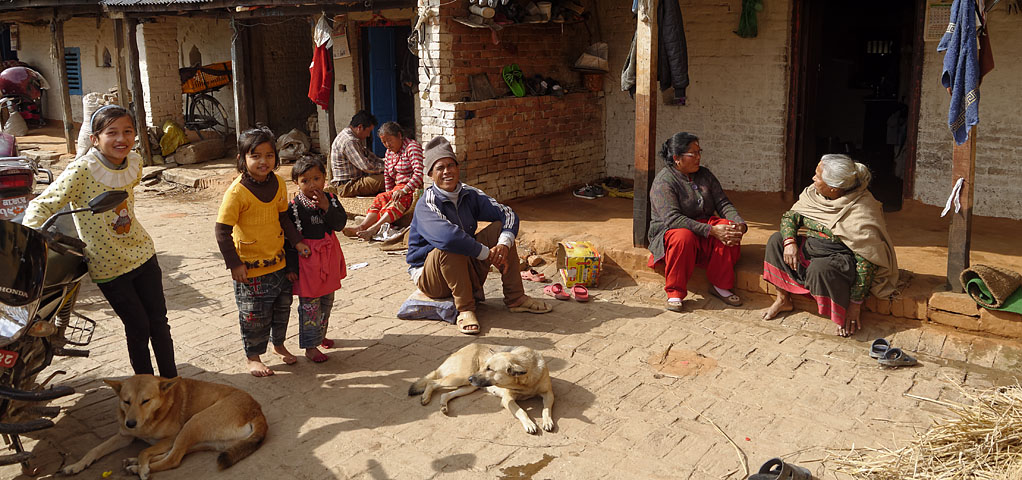
















































![]()












